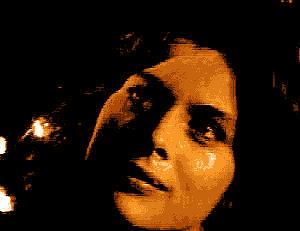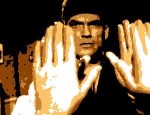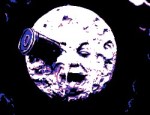Film Review
Jean-Jacques Beineix may not have won over the critics but his first feature,
Diva (1981), was a notable box office
success, attracting an audience of over two million in France alone.
The critics had even more to complain about with his second film,
La Lune
dans le caniveau, a liberal adaptation of David Goodis's 1983 novel
The
Moon in the Gutter which positively revels in its lurid artistry and
rejection of conventional film narrative. For the film's detractors,
this second Beineix offering exemplified all that was wrong with the so-called
cinéma du look that hit French cinema in the early 1980s, films
that apparently threw out every vestige of narrative substance in the pursuit
of visual artistry for its own sake.
Along with Luc Besson and Leos Carax, Beineix sought to bring a vigorous
modernity to cinema, through a greater emphasis on design and visual poetry,
but all three suffered from a mostly negative critical appraisal that greatly
hindered their respective careers. Three decades on, the work of these
three brazen innovators has come to be far more favourably assessed - indeed
many now consider their films to be some of the most inspired and meaningful
of the 1980s, a decade in which verve and originality were in very short
supply.
La Lune dans le caniveau is certainly a far less palatable proposition
than
Diva. A slick, well-paced modern thriller,
Diva
combines stunning visuals with a strong plot and solid, believable characters.
By contrast, Beineix's second feature is a dream-like haze of a film that
moves along at a snail's pace and never seems to coalesce into anything concrete.
It's an alluring and unusal film, its uninhibited use of colour, stage-like
sets and fluid camerawork giving it an artificiality that is both striking
and eerie. There's a claustrophobic feel to the film, which gradually
intensifies as it progresses, so that you end up feeling as trapped as the
central protagonist. There are no abrupt transitions. Scenes
flow gently into one another as in a dream; fantasy and reality are brought
together so seamlessly that we can scarcely tell one from the other.
The film is gloriously self-conscious and yet it has a strangeness and poetry
that no other French film of the 1980s had. It is a singularly weird
and beguiling piece of film art.
The film's most obvious weak point is a lack of depth on the characterisation
front, but Beineix gets away with this (at least to a degree) by employing
two incredibly charismatic actors for the two lead roles - Gérard
Depardieu and Nastassja Kinski. Their characters, Gérard and
Loretta, are blatant film noir archetypes - he is the tragic loner stuck
in his own personal Hell, she is the seductive femme fatale who offers either
escape or damnation. Depardieu and Kinski hardly need to act - the
camera does all the work, establishing their characters as lost souls continually
meeting and parting, yet never really making contact, in a contorted noir
fantasy.
Gérard is like some ghoul from a Gothic fantasy stalking the lower
depths of Marseille on a never-ending quest for revenge; Loretta is the mystical
object of desire that has been man's temptress since the dawn of time, as
elusive and ominous as the private goal that Gérard has set himself.
Revenge and desire make up the terrible concoction that Gérard imbibes
as he is driven blindly onwards, alienating himself from those closest to
him and becoming increasing divorced from reality as his twin obsessions
grow and fuse into an all-consuming need for release. The film ends
with no clear resolution, just a harrowing sense that Gérard's nightmare
will never end. 'Try Another World' are the words that scream mockingly
at him from a billboard poster. He ignores them and remains where he
is, trapped forever in a dark sealed room from which there is no escape.
Beineix claims that his original cut of the film ran to four hours, but he
had to reduce this to just over two hours to satisfy the distributors.
When he wanted to make a director's cut of the film - as he had done, successfully,
with his next feature,
37°2 le matin
- he learned that Gaumont had destroyed all the unused footage from the original
film. We will never know what
La Lune dans le caniveau was intended
to look like, but if you consider how greatly Beineix's next film was improved
by its re-edit, it might well have been a masterpiece.
© James Travers 2016
The above content is owned by frenchfilms.org and must not be copied.
Next Jean-Jacques Beineix film:
37°2 le matin (1986)
Film Synopsis
In present day Marseille, a young dockworker named Gérard Delmas is haunted
by the brutal death of his sister, who committed suicide with a razor after
being raped in the street. Since that terrible night he has moped about
the city's seedier precincts, looking for clues that will lead him to identify
the man who led his sister to take her life and inflict on him his idea of
justice. One evening, a beautiful woman in a red sports car suddenly
glides into his life. Gérard already has a girlfriend, Bella,
who is devotedly attached to him, but this other woman, Loretta, is a far
more fascinating proposition. Rich, elegant and seductive, she looks
like a princess and offers him the possibility of a way out of his personal
nightmare. But he chooses to stay and pursue his deadly obsession right
to the bitter end...
© James Travers
The above content is owned by frenchfilms.org and must not be copied.



